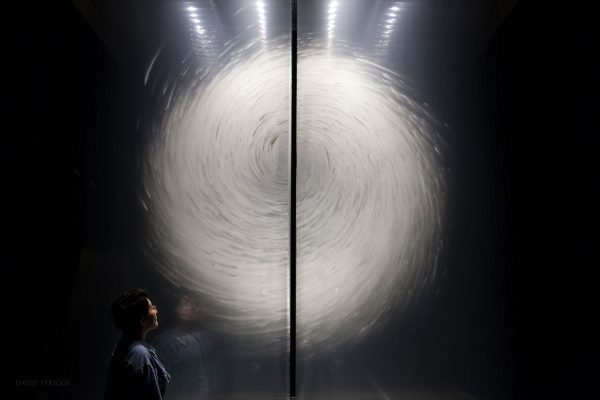Gestalt theory posits that the mind organizes stimuli into meaningful wholes, rather than processing individual elements. In David Spriggs’ ‘Gravity’, the viewer’s eye is drawn to the central axis of the spiral, where various elements in the piece contribute to the sense of movement and continuity, creating a cohesive whole. The implied motion around a central axis in the artwork ‘Gravity’ is like the circular navigation of the viewer who walks around the work to comprehend the interplay between its two and three-dimensional qualities.
In “Gravity,” Spriggs invites the viewer to engage with the installation as an experience, rather than simply as a collection of individual images. The viewer’s perception is shaped by the way the layers of painted transparencies interact and overlap with one another, creating a sense of depth and form and movement. We perceive all the images of ‘Gravity’ simultaneously as a form, but one without boundaries.
The work of phenomenologists such as Maurice Merleau-Ponty, highlight the importance of understanding the lived experience of the world and the ways in which the body shapes perceptions. In “Gravity,” Spriggs creates an embodied experience, which encourages a deeper understanding of the subject matter, how perception creates itself, and how the mind organizes stimuli into a meaningful whole.








